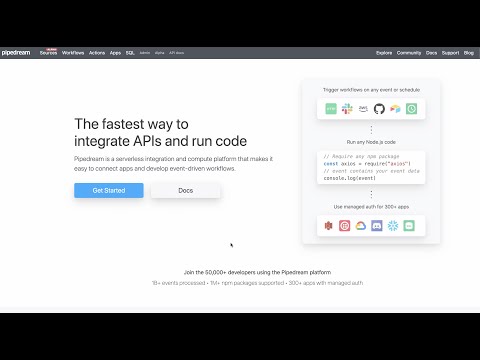What do you want to automate
with PagerDuty and Azure DevOps?
Prompt, edit and deploy AI agents that connect to PagerDuty, Azure DevOps and 3,000+ other apps in seconds.
Trusted by 1,000,000+ developers from startups to Fortune 500 companies
Popular Ways to Connect PagerDuty with Azure DevOps#
Popular PagerDuty and Azure DevOps Triggers#
Popular PagerDuty and Azure DevOps Actions#
Find the user on call for a specific schedule. See the docs here
Overview of PagerDuty#
The PagerDuty API offers a powerful interface to automate your digital operations management. By leveraging its capabilities on Pipedream, you can create workflows that respond to incidents, automate alerts, and synchronize incident data across various platforms. PagerDuty's API enables you to manage services, teams, and incidents, ensuring that your systems remain operational and that the right people are notified at the right time.
Connect PagerDuty#
import { axios } from "@pipedream/platform"
export default defineComponent({
props: {
pagerduty: {
type: "app",
app: "pagerduty",
}
},
async run({steps, $}) {
return await axios($, {
url: `https://api.pagerduty.com/users/me`,
headers: {
Authorization: `Bearer ${this.pagerduty.$auth.oauth_access_token}`,
"Accept": `application/vnd.pagerduty+json;version=2`,
},
})
},
})
Overview of Azure DevOps#
The Azure DevOps API opens up a world of possibilities for automating and enhancing your software development workflows. Through Pipedream, you can leverage this API to create custom integrations and serverless workflows that interact with your Azure DevOps projects. Automate tasks such as triggering builds, managing work items, updating repositories, and orchestrating multi-step processes that connect Azure DevOps with other services.
Connect Azure DevOps#
import { axios } from "@pipedream/platform"
export default defineComponent({
props: {
azure_devops: {
type: "app",
app: "azure_devops",
}
},
async run({steps, $}) {
return await axios($, {
url: `https://app.vssps.visualstudio.com/_apis/profile/profiles/Me`,
headers: {
Authorization: `Bearer ${this.azure_devops.$auth.oauth_access_token}`,
},
params: {
"api-version": `5.0`,
},
})
},
})
Related Videos#
